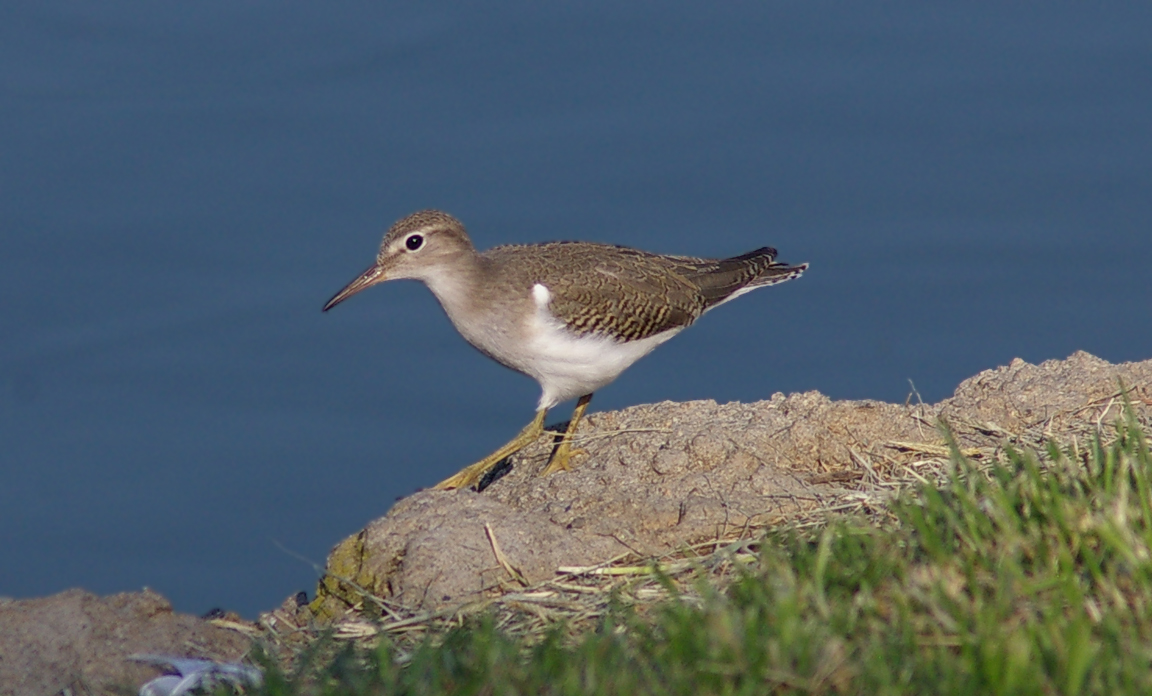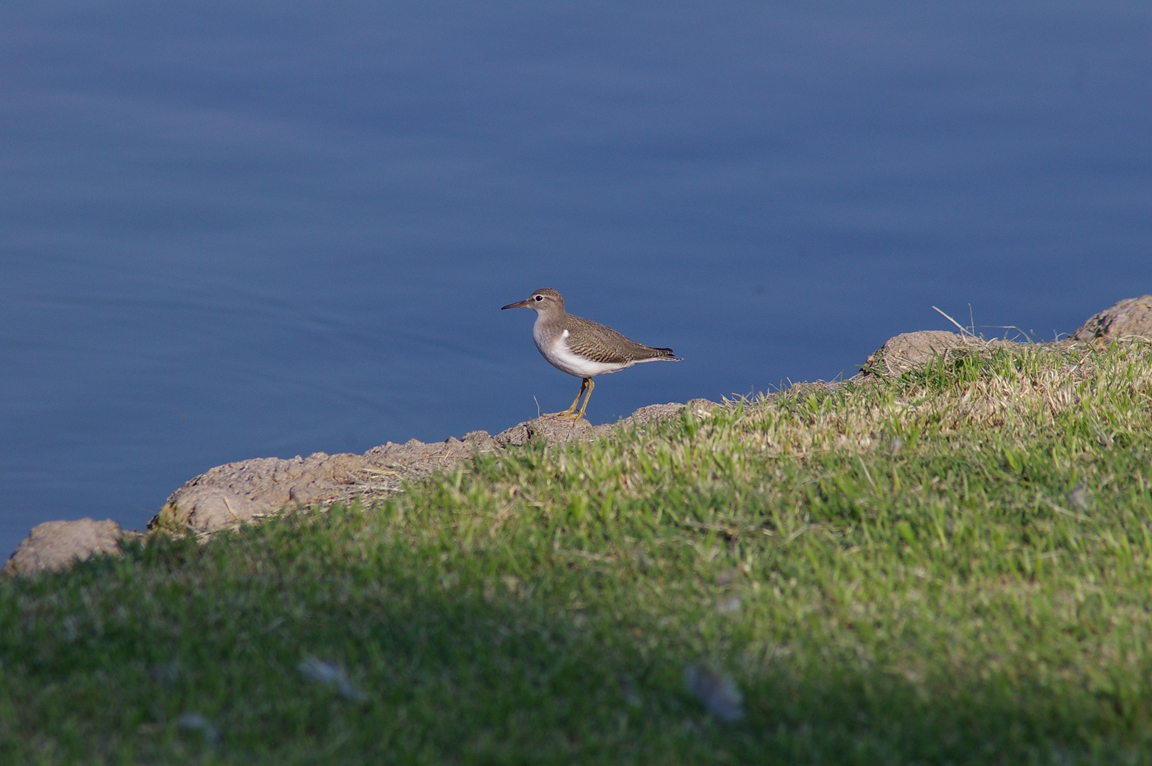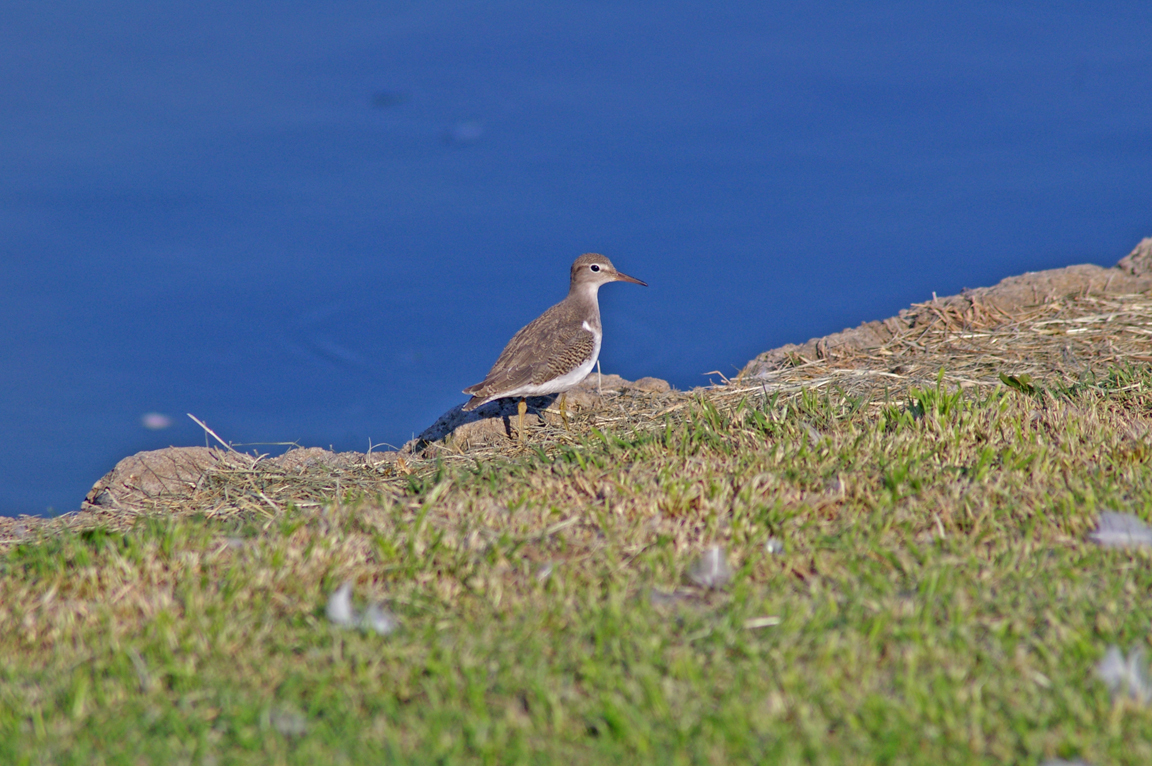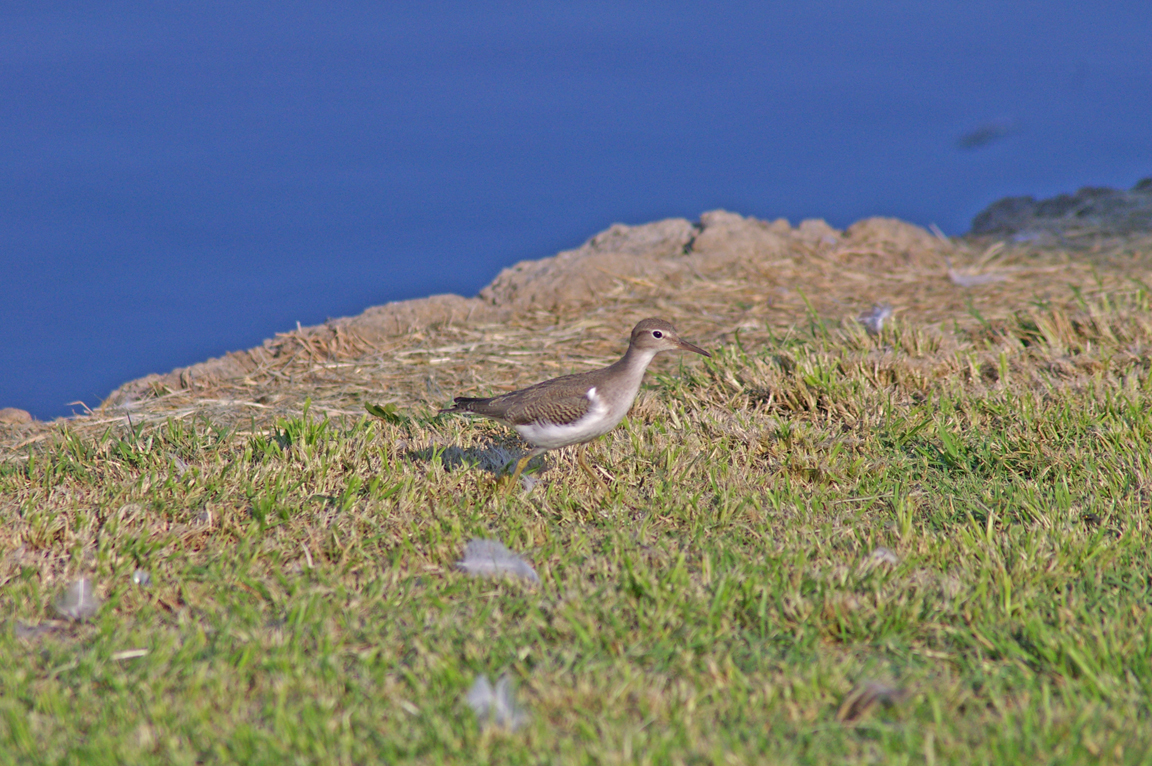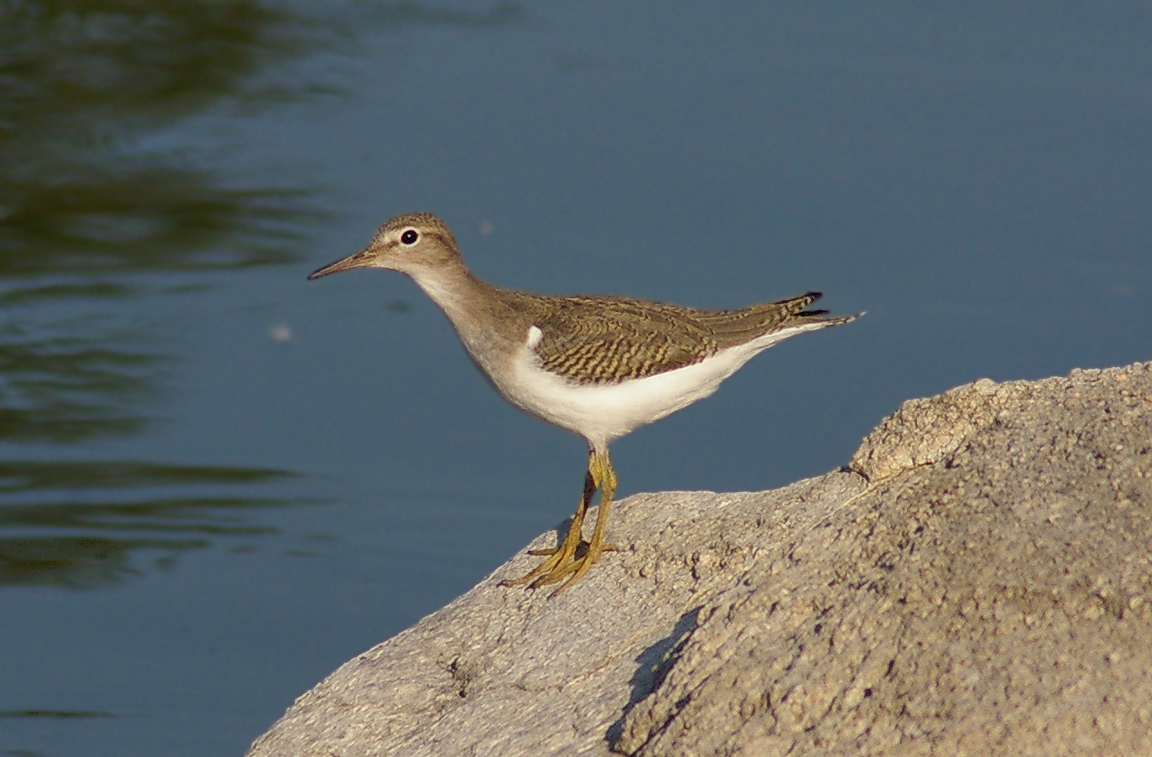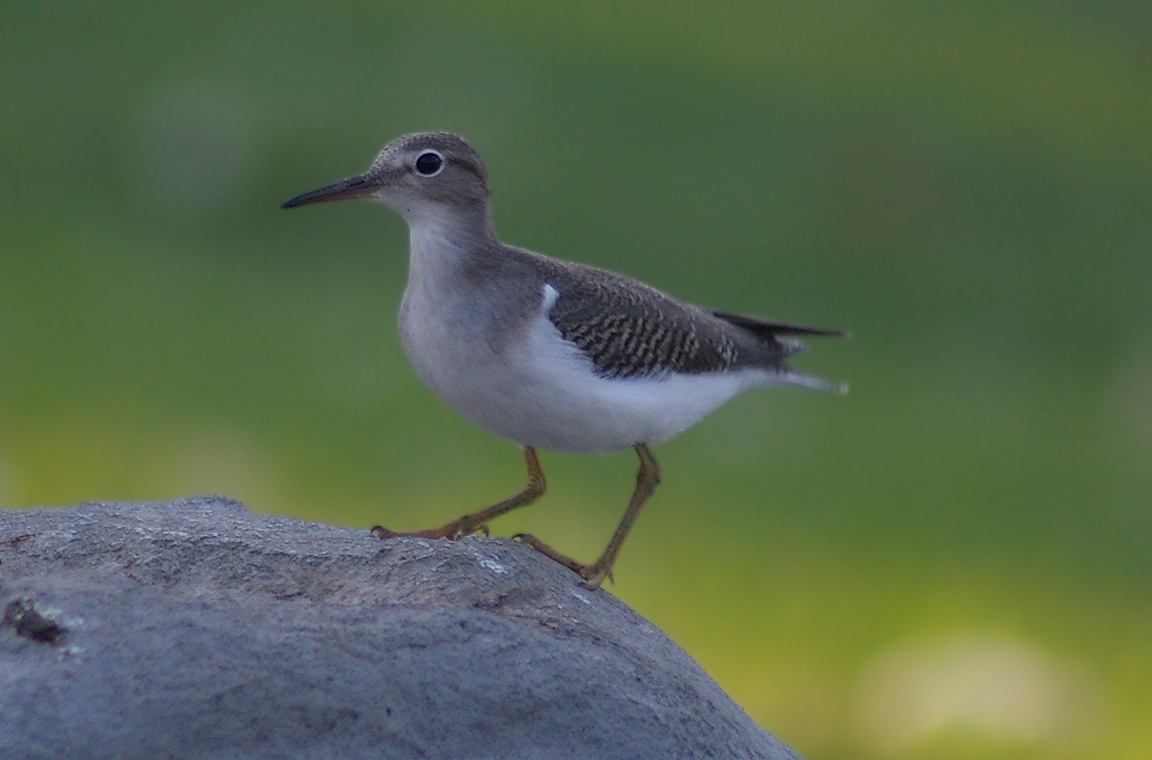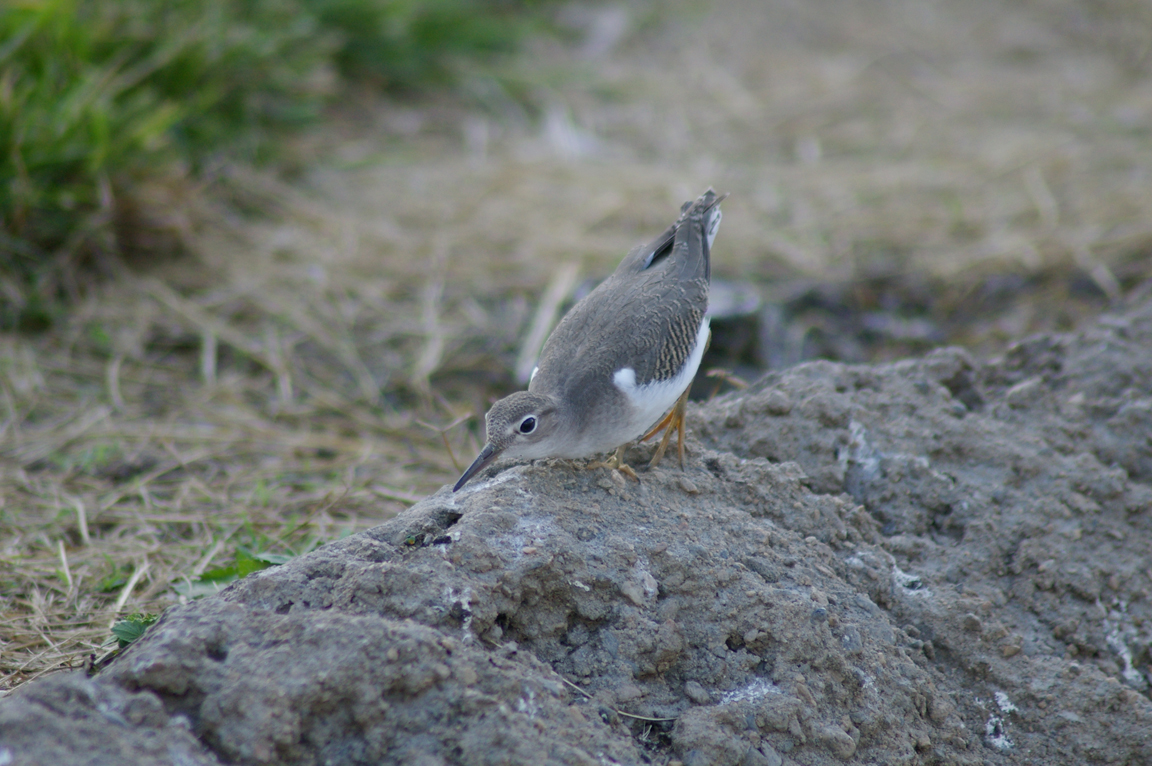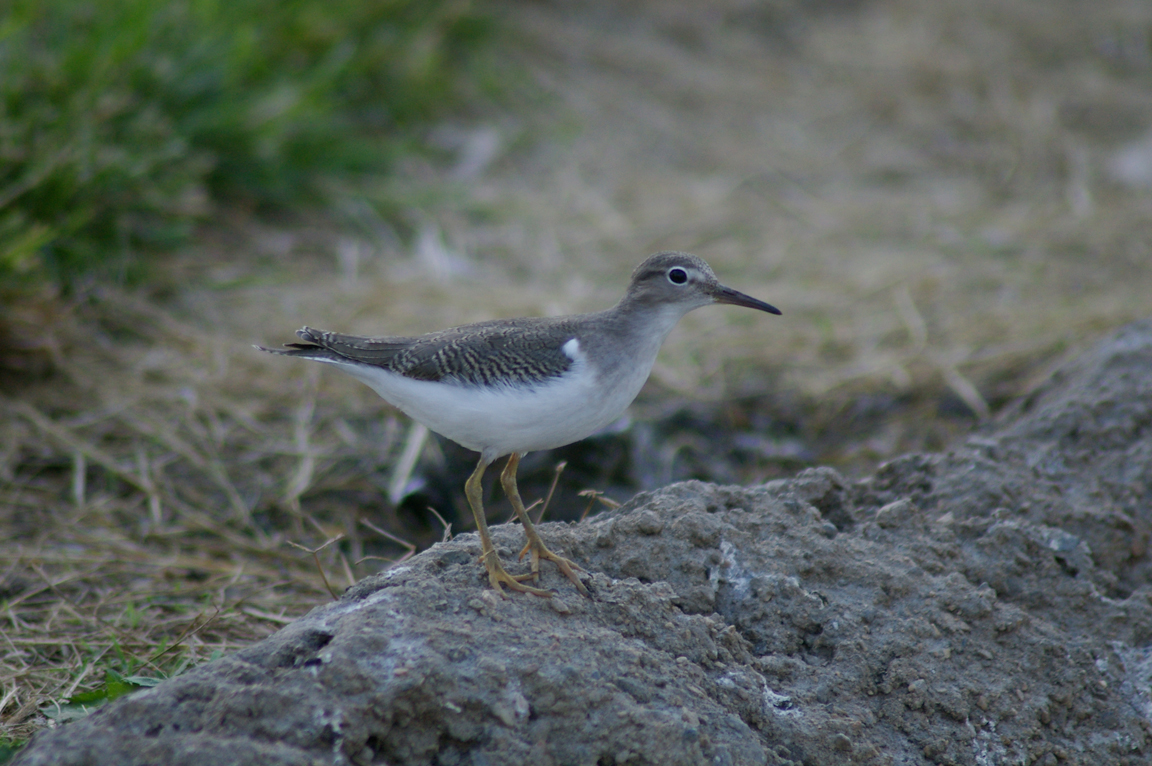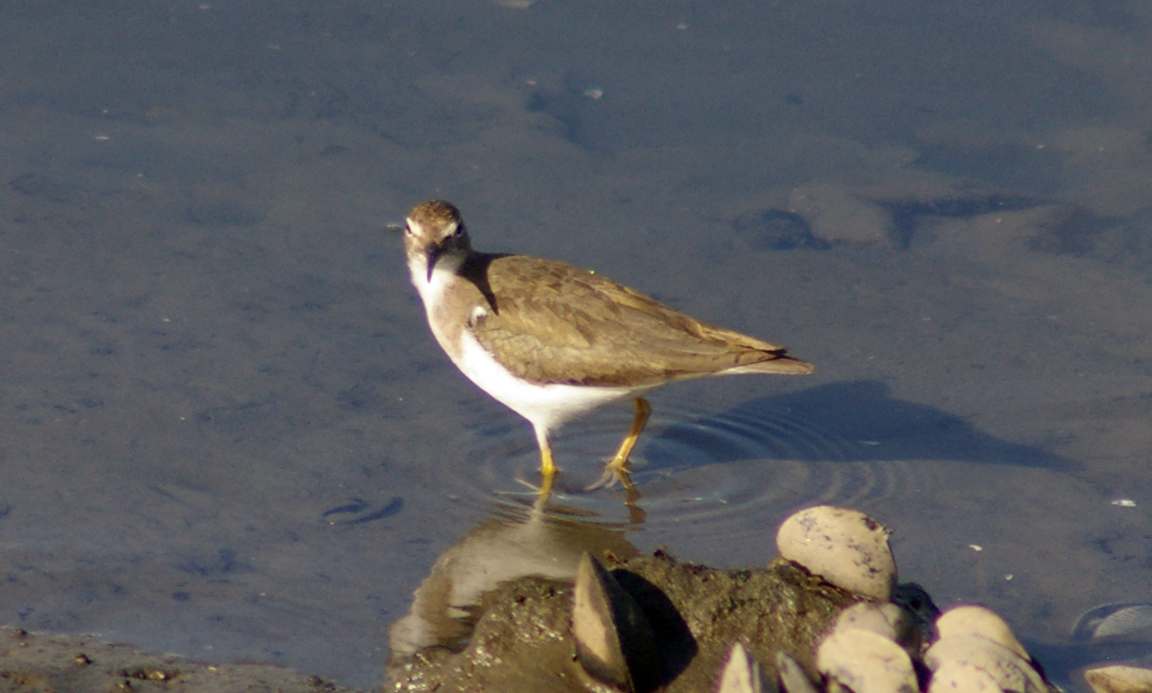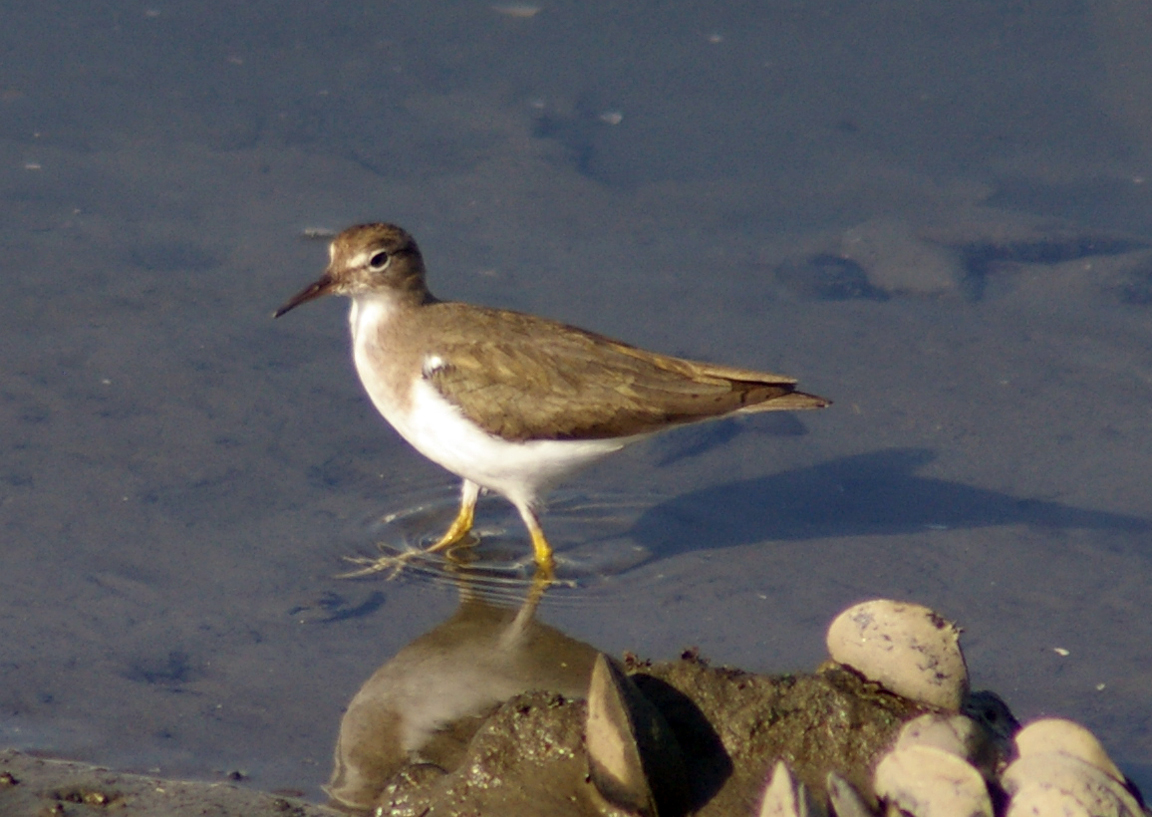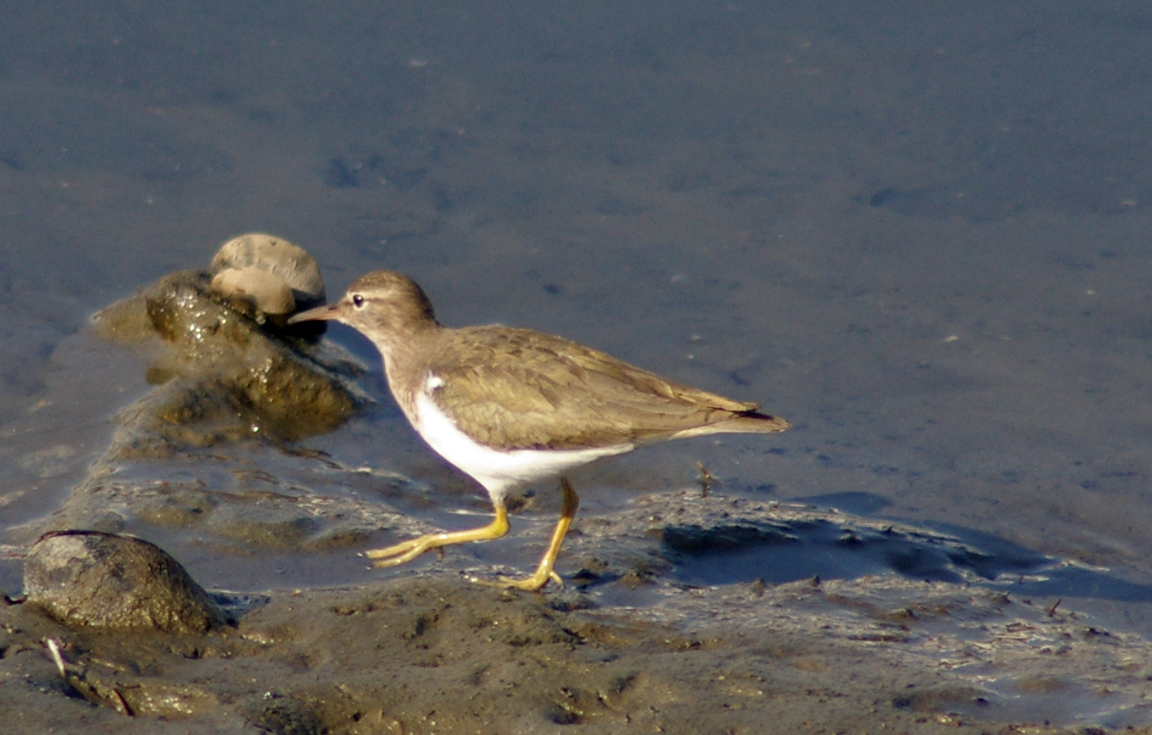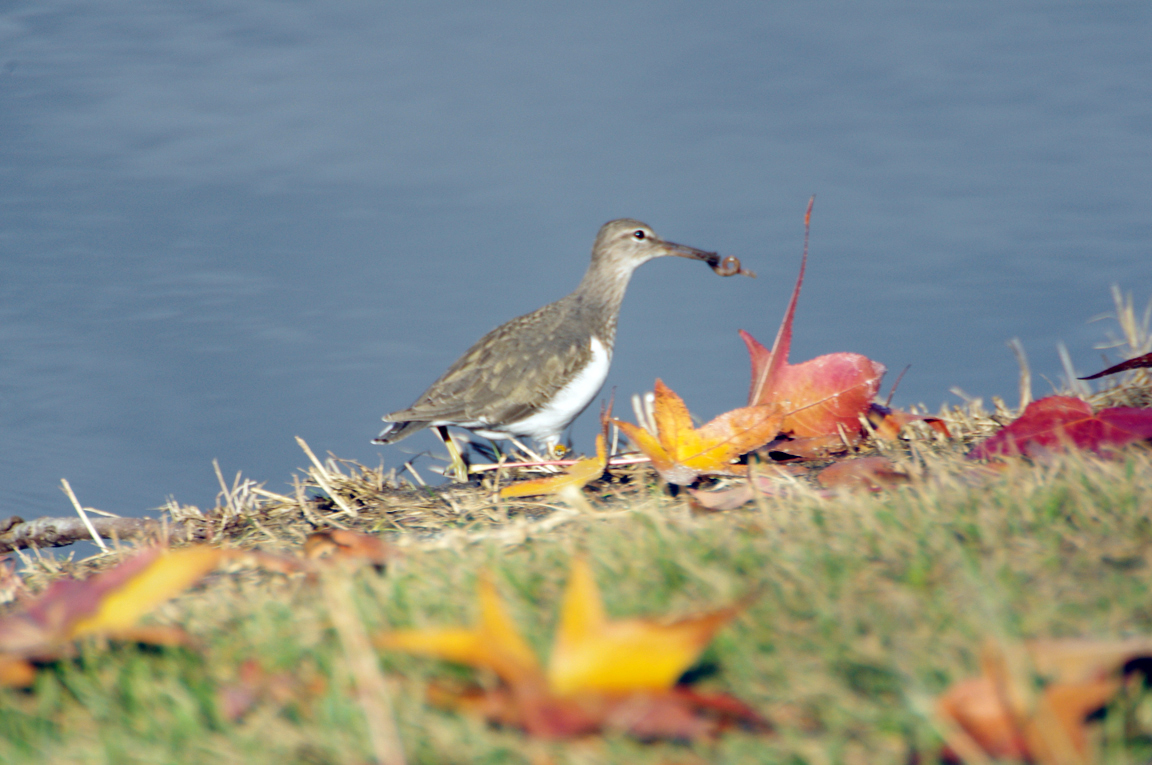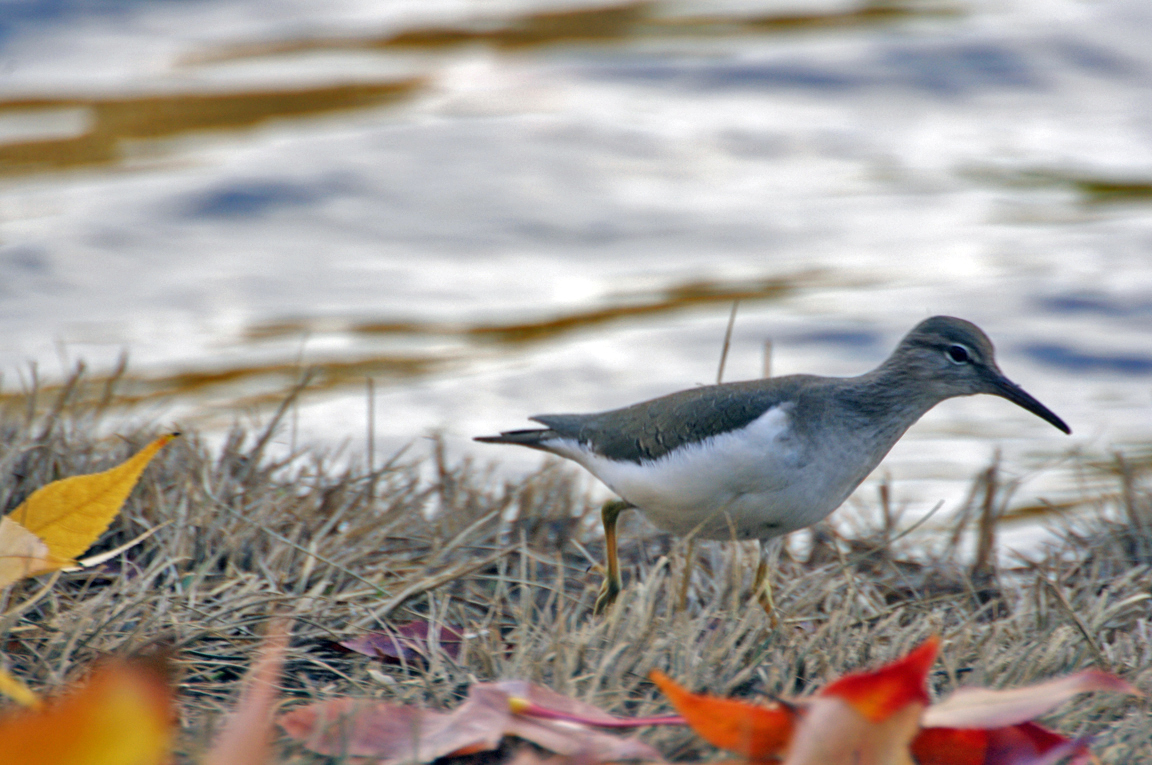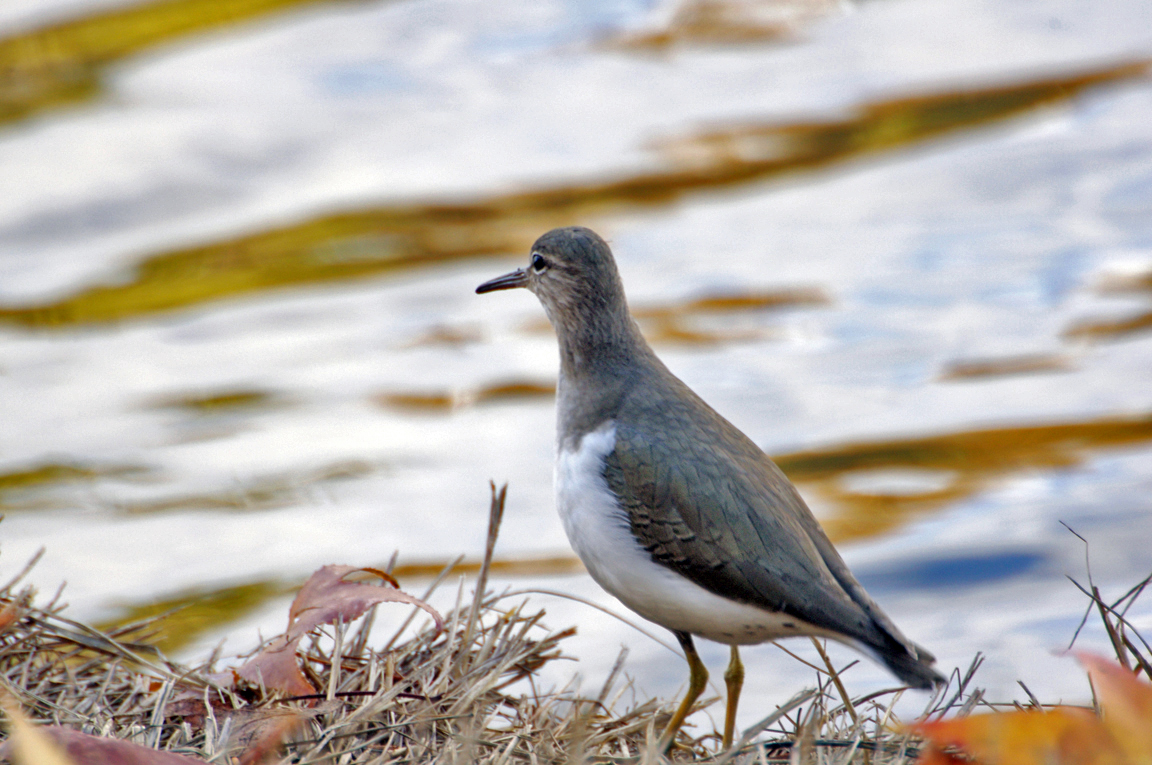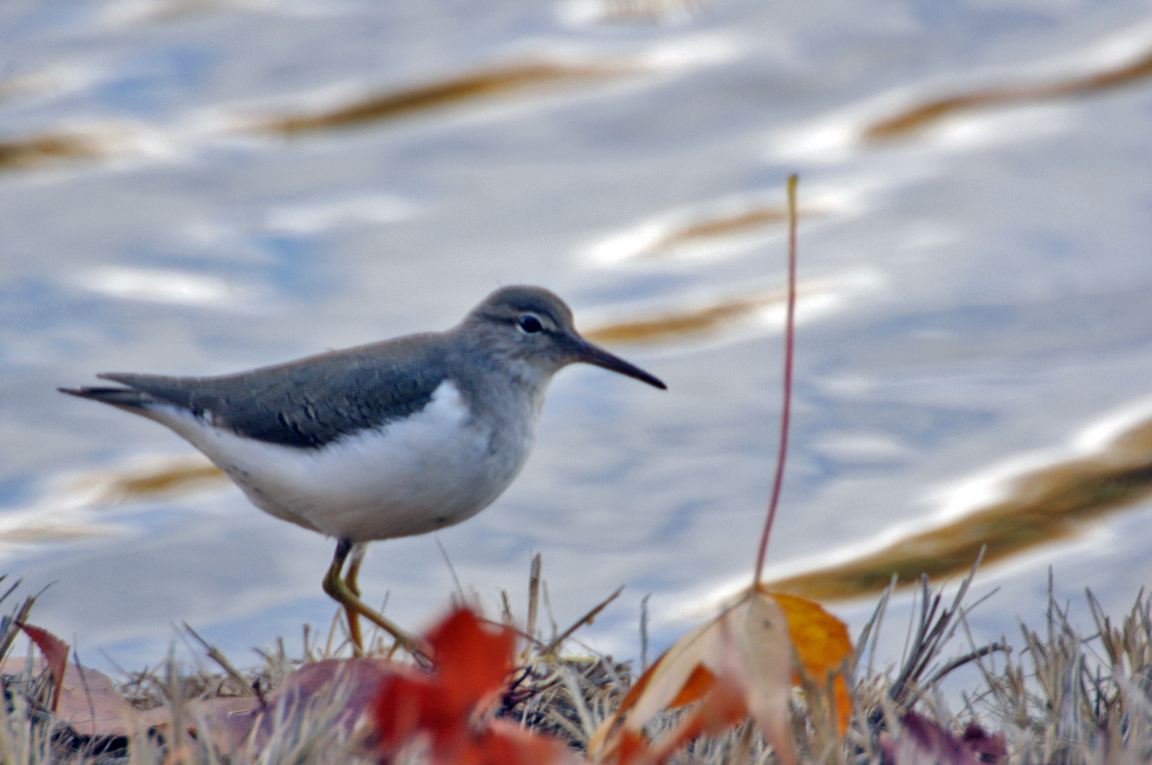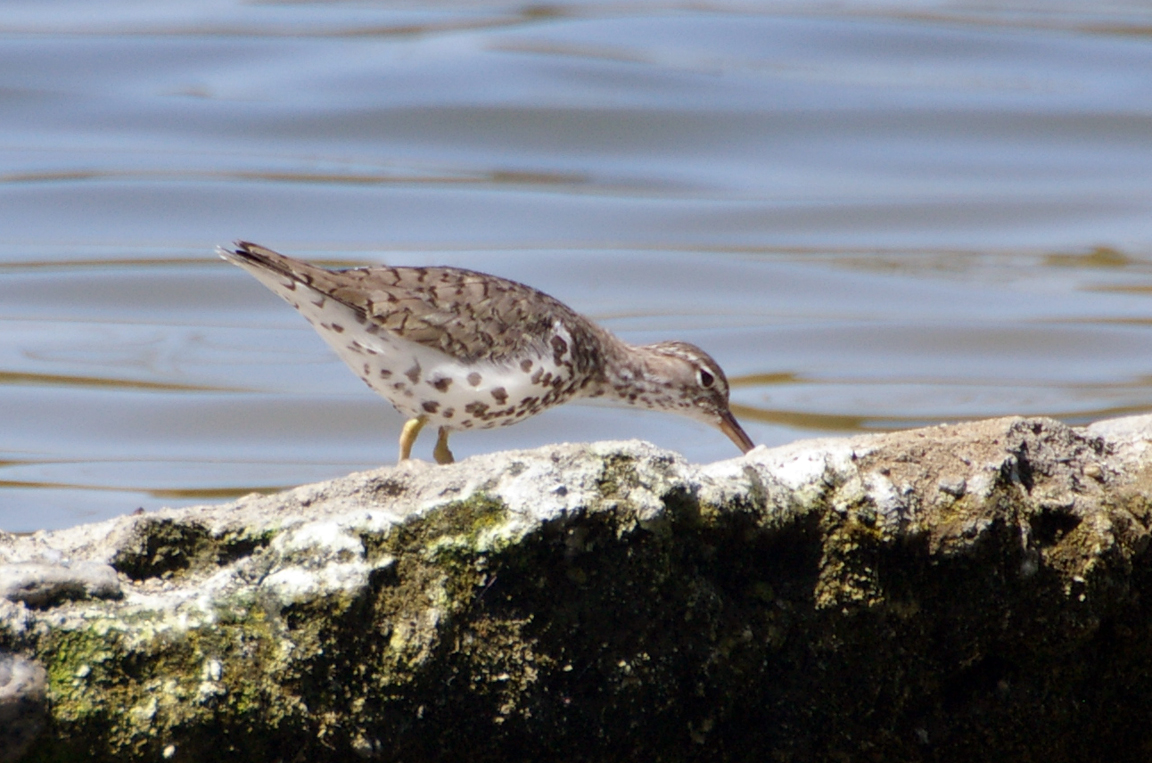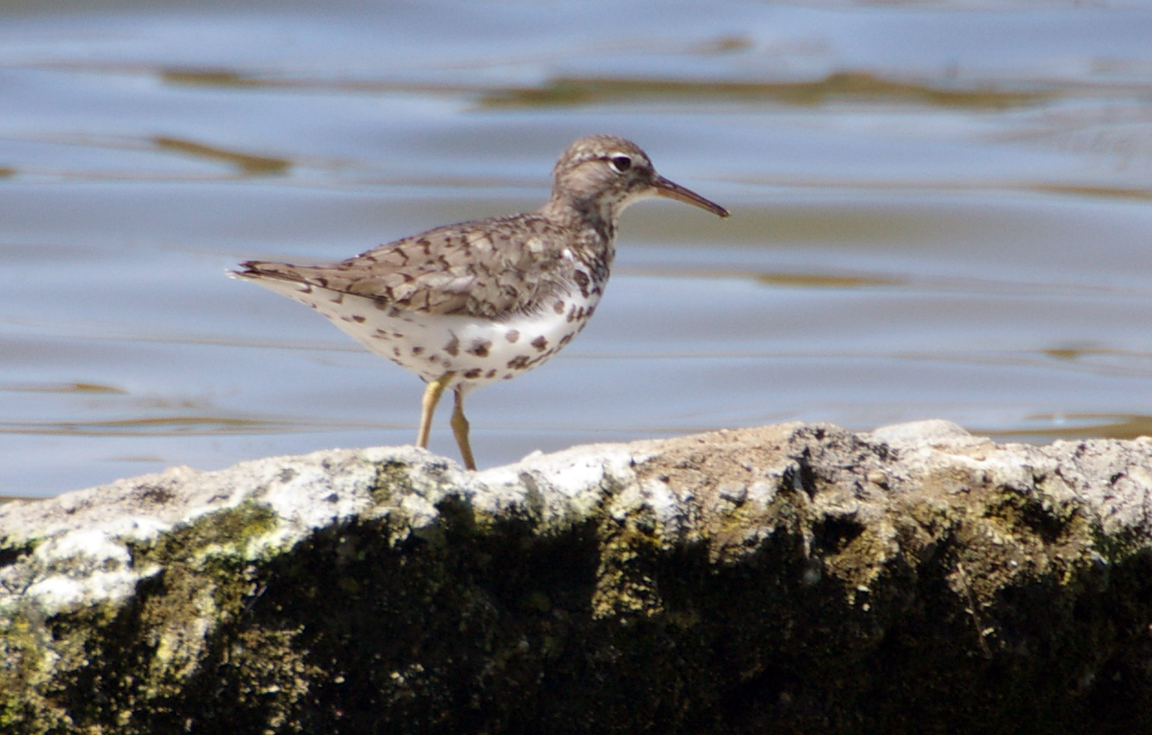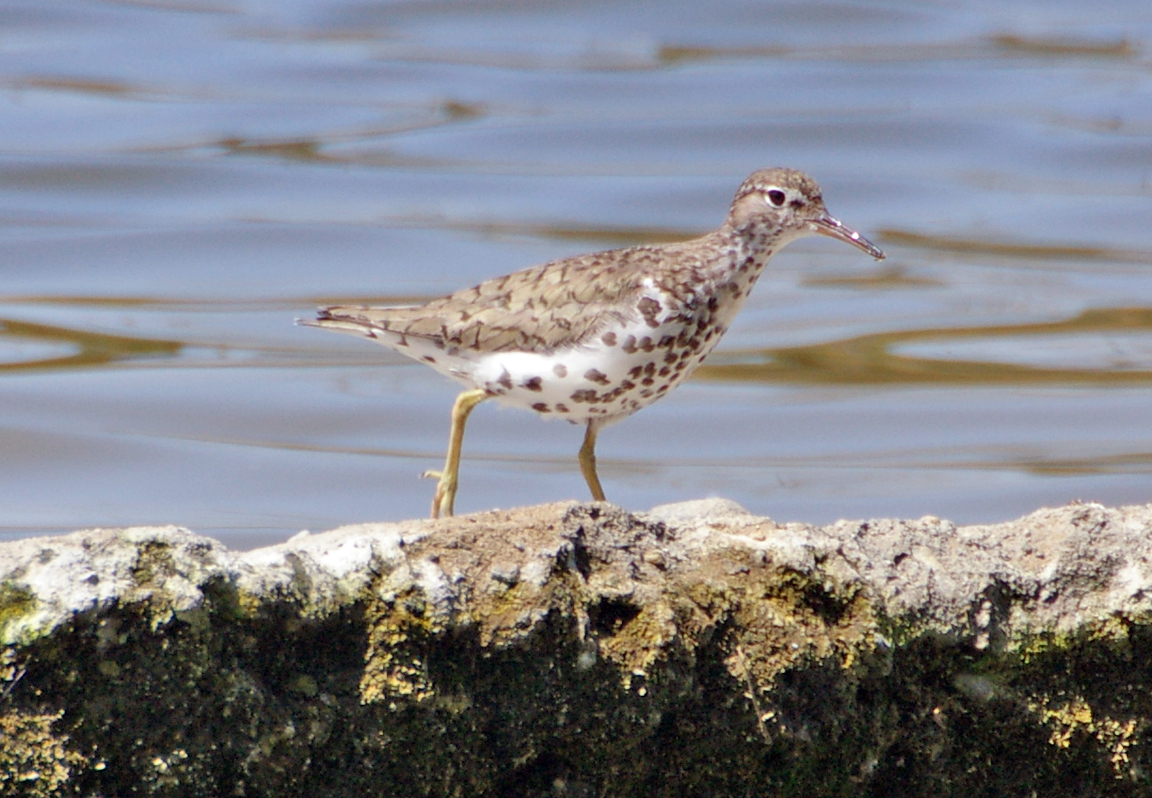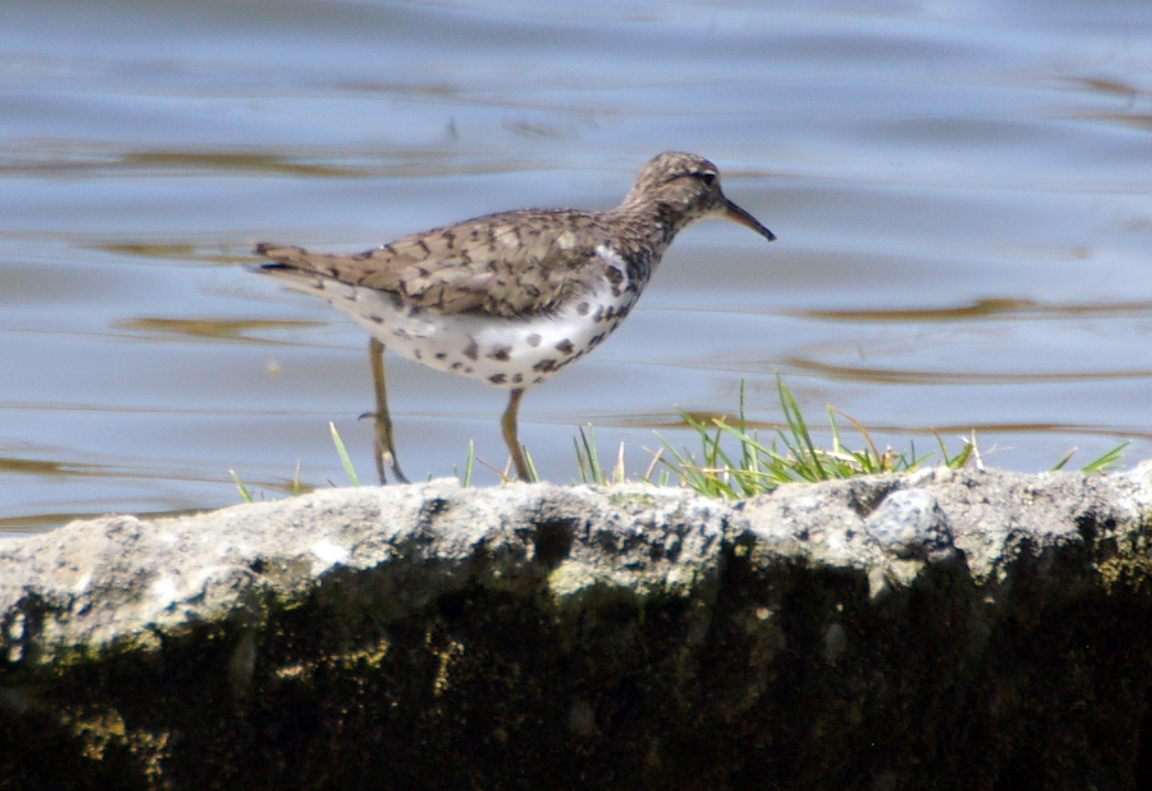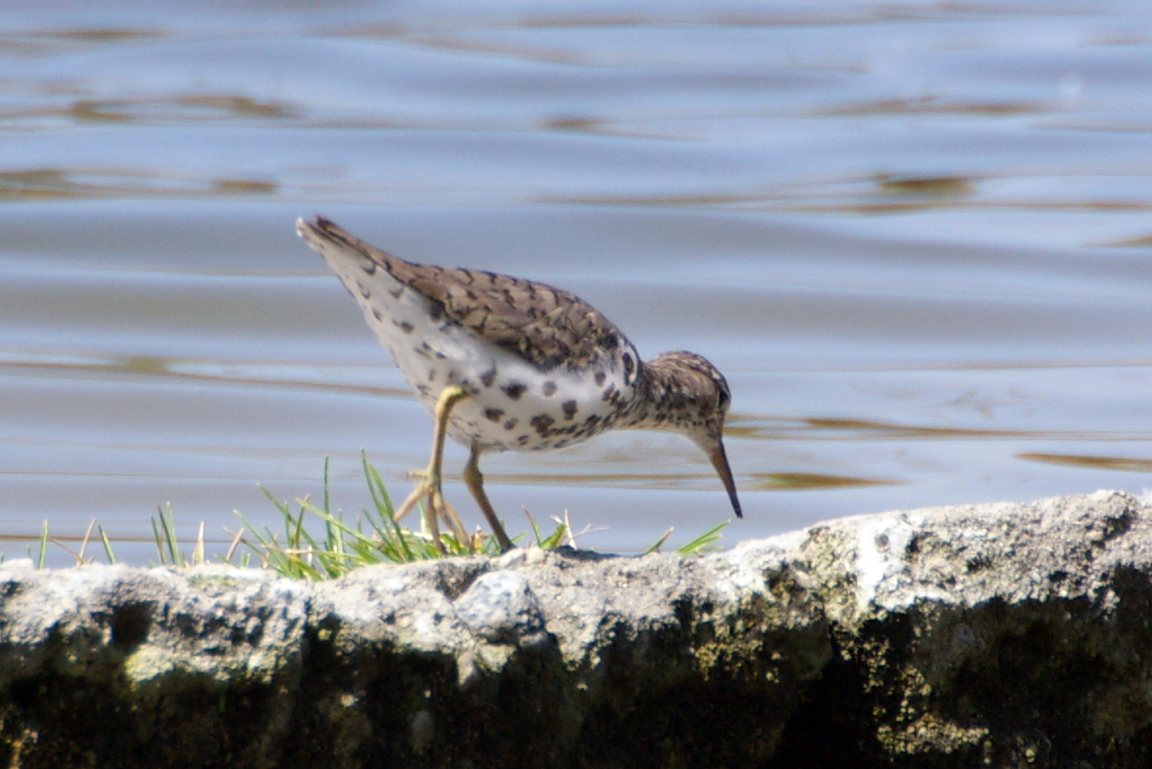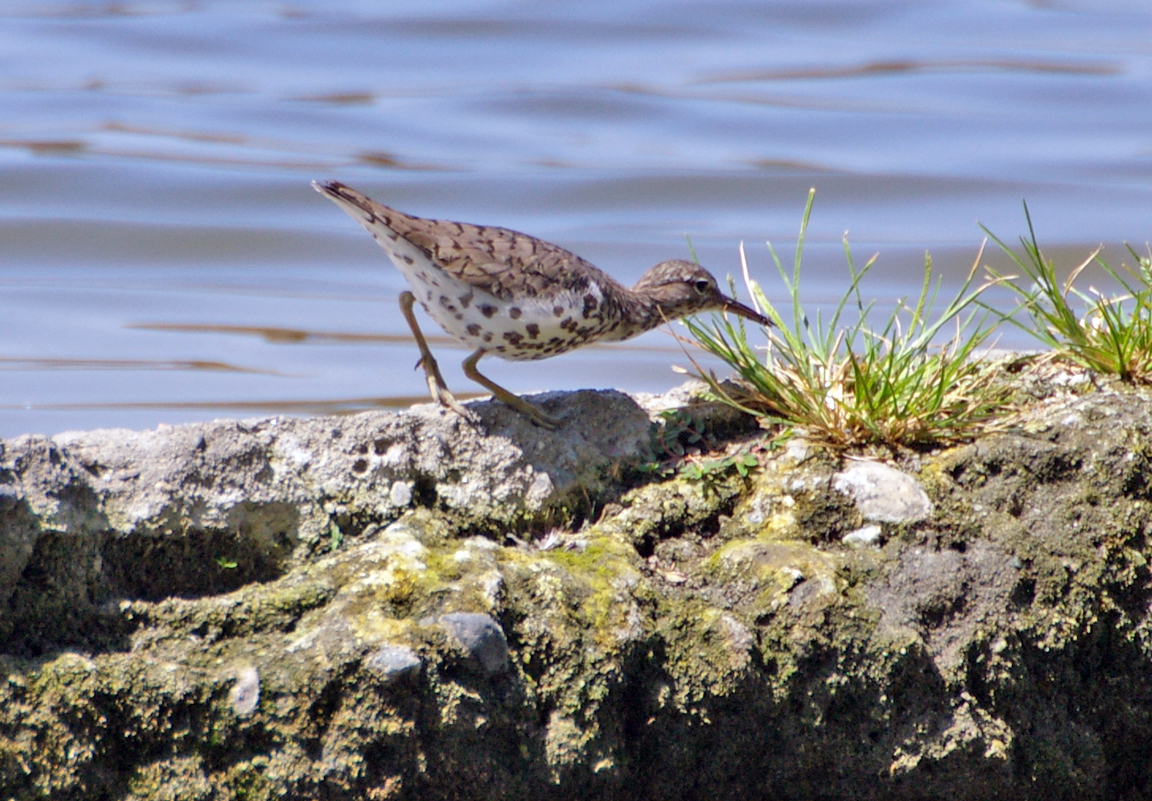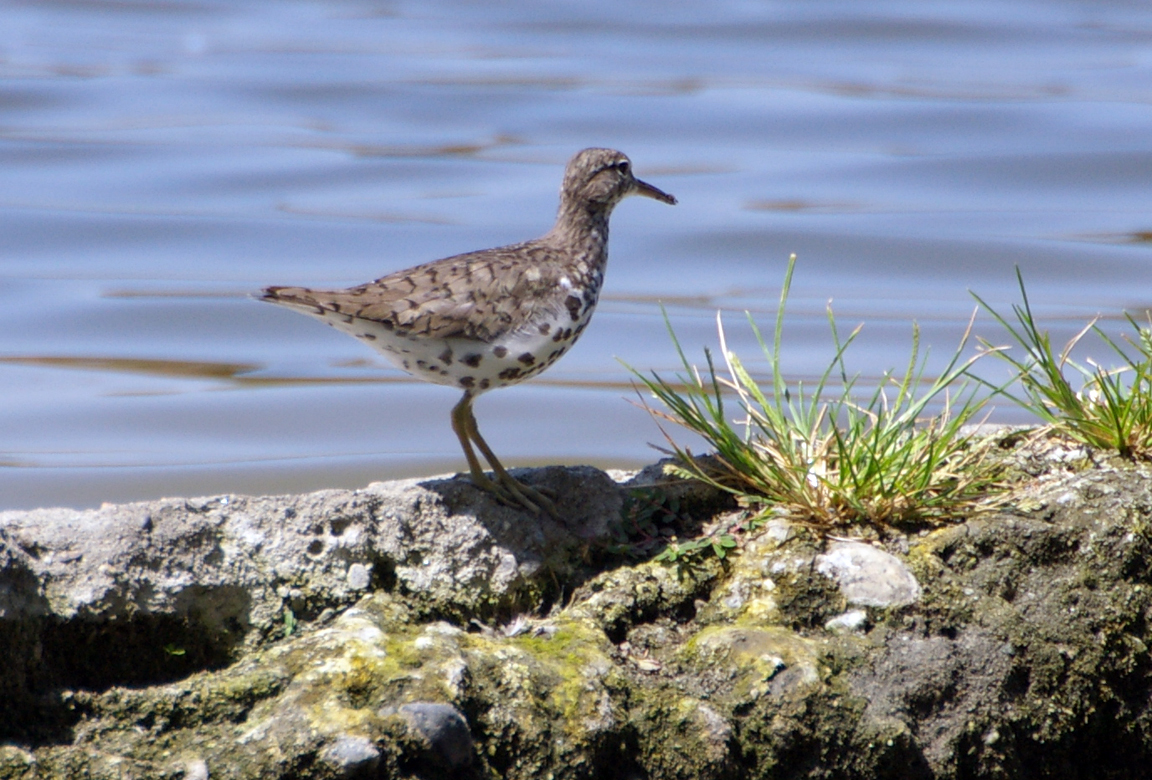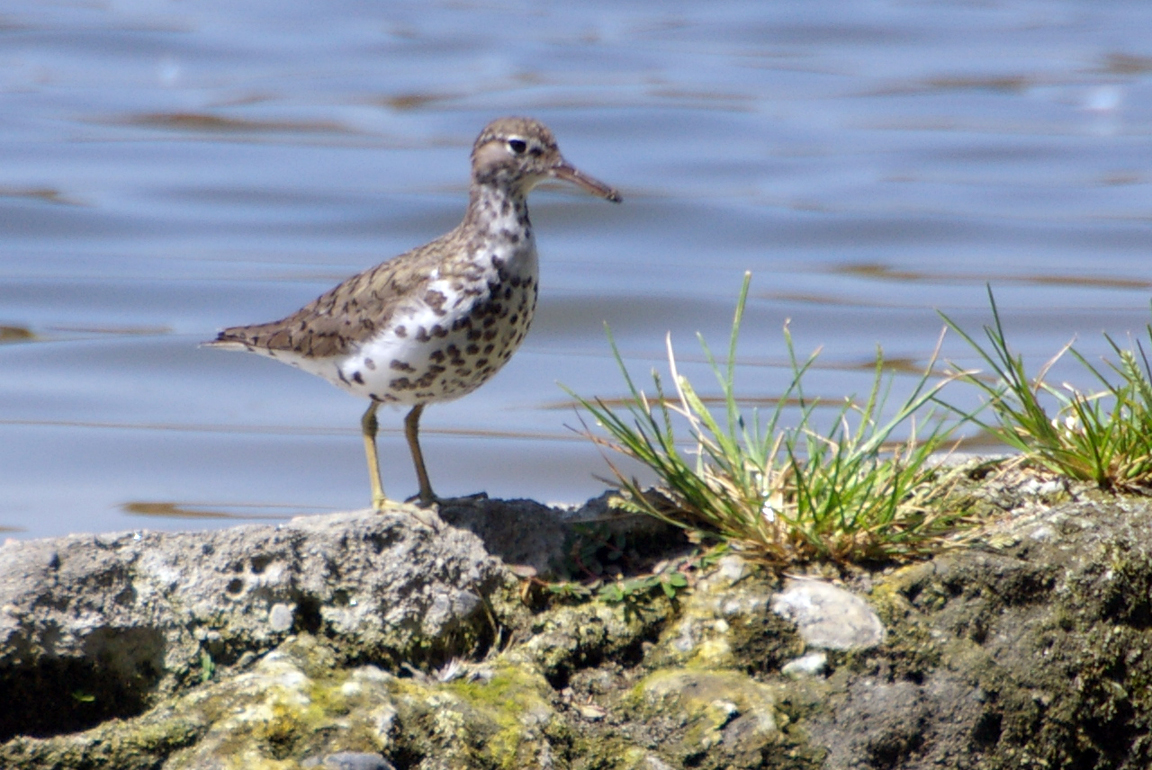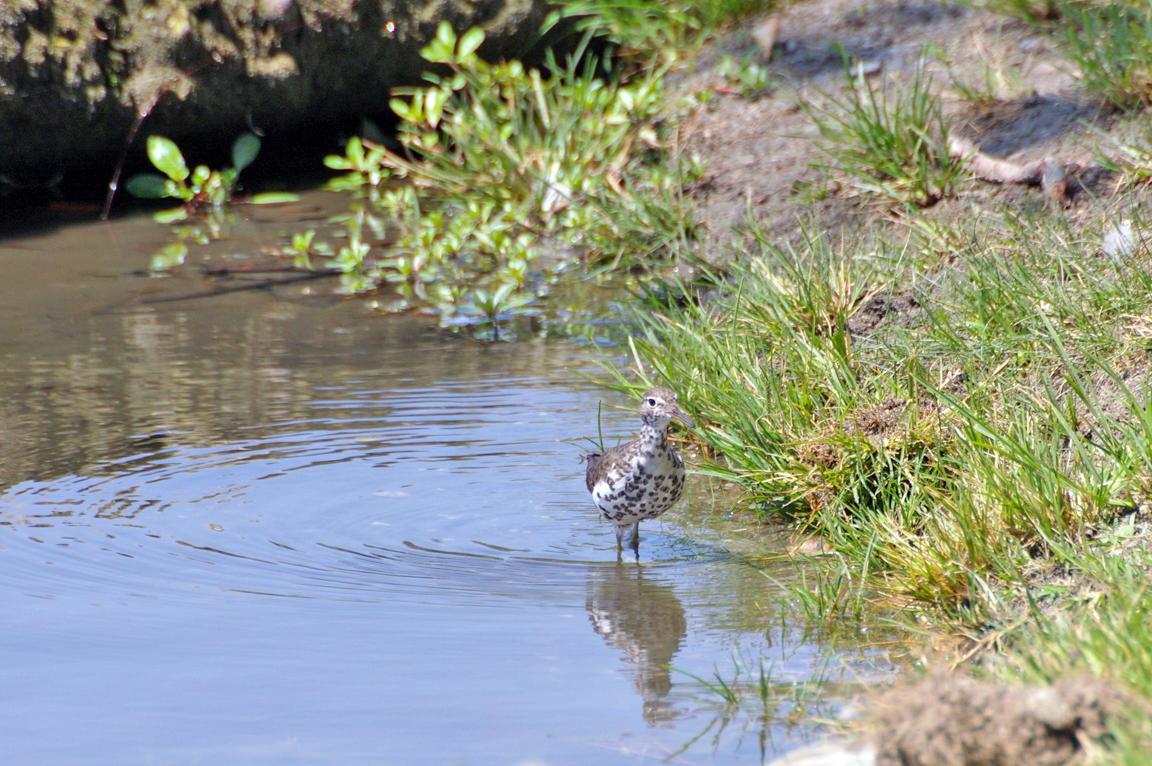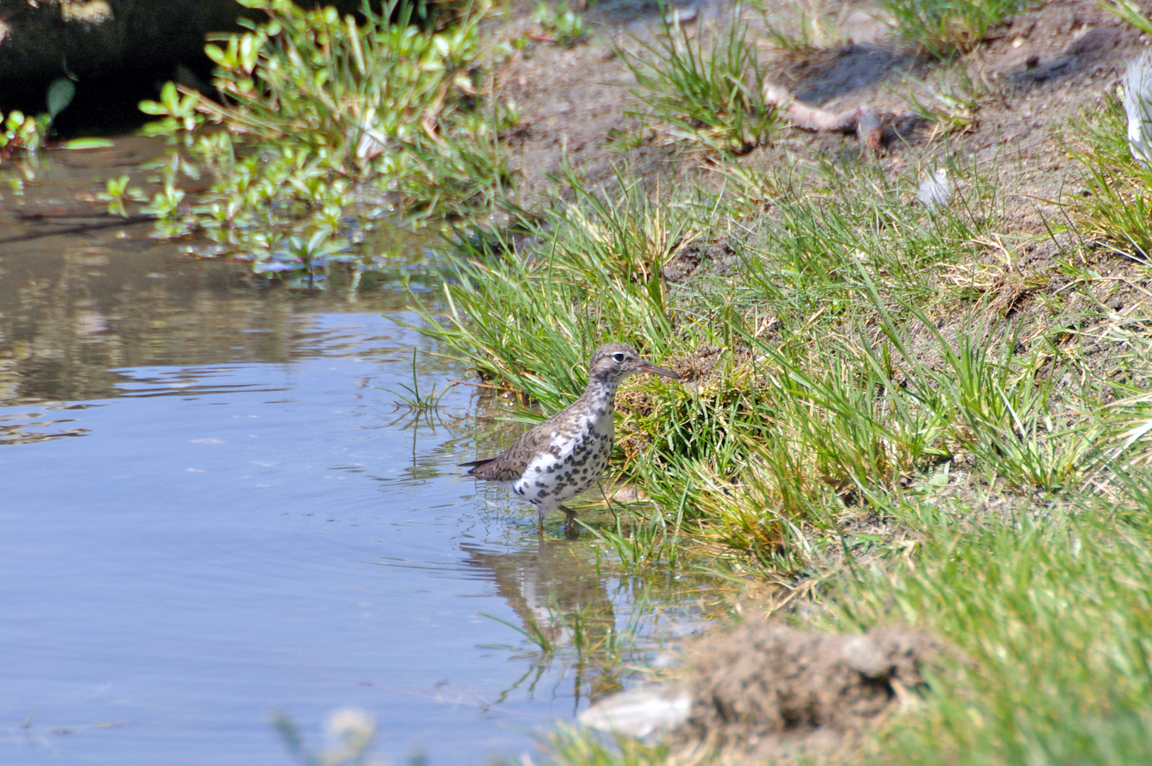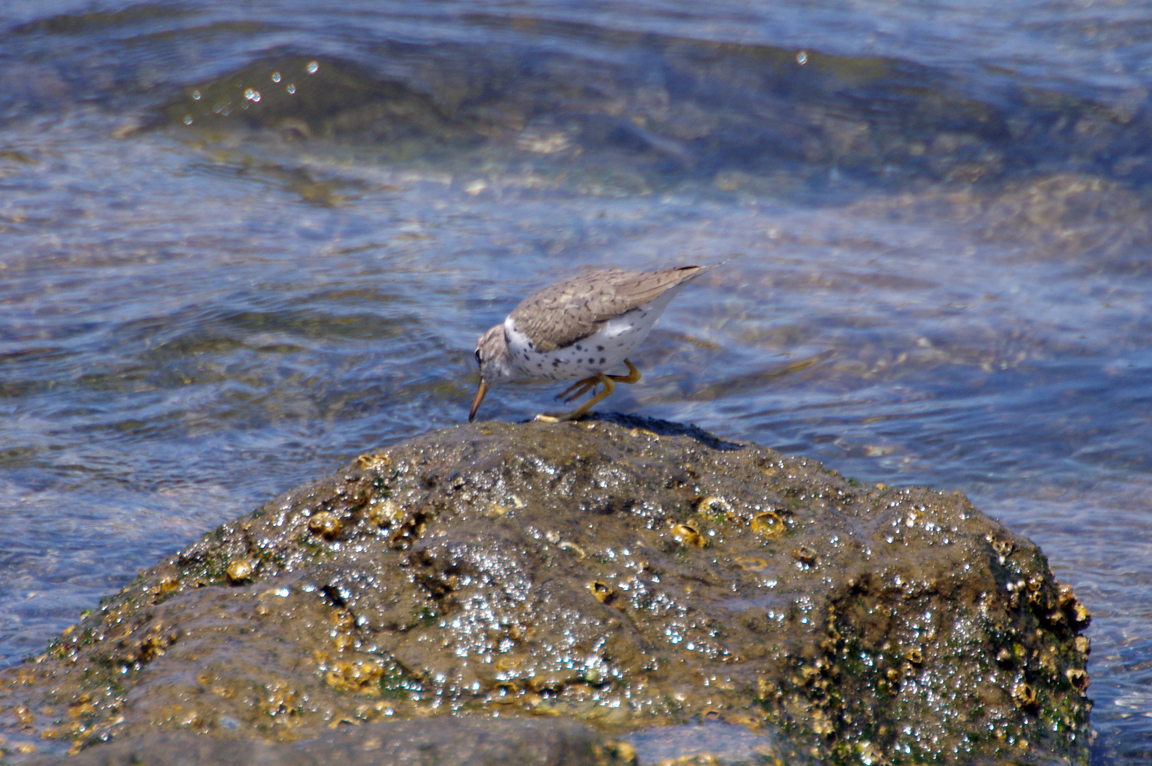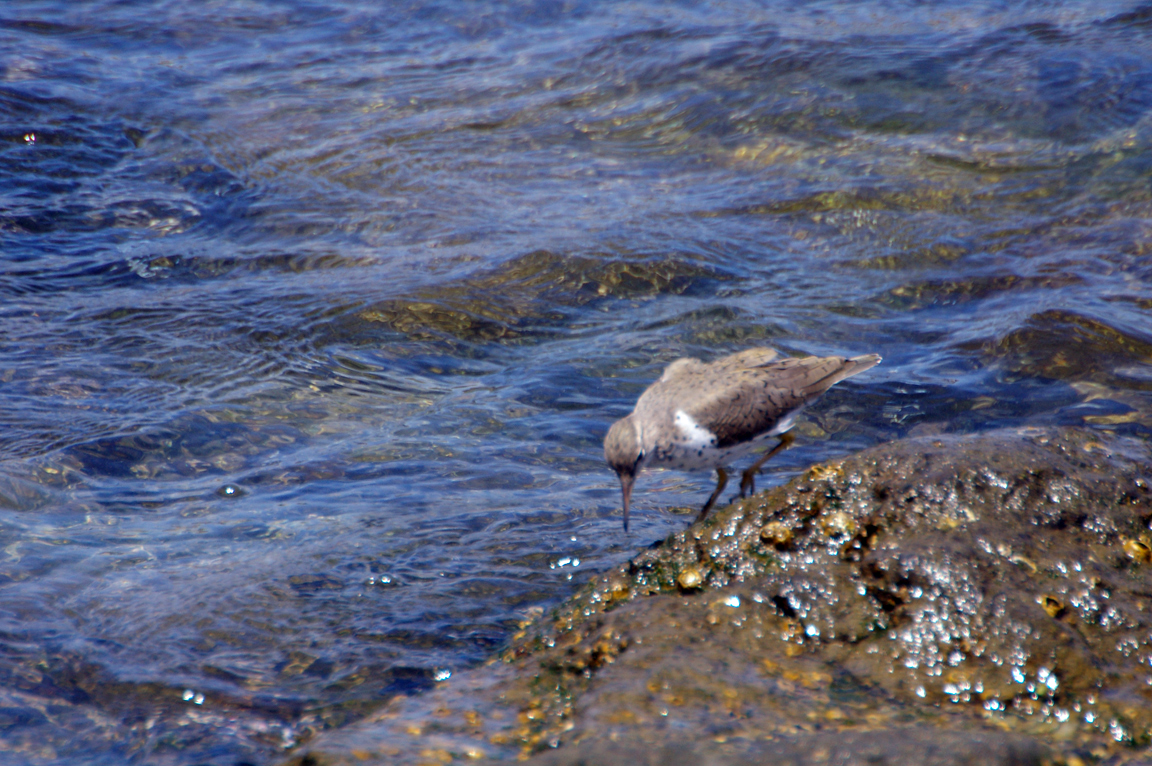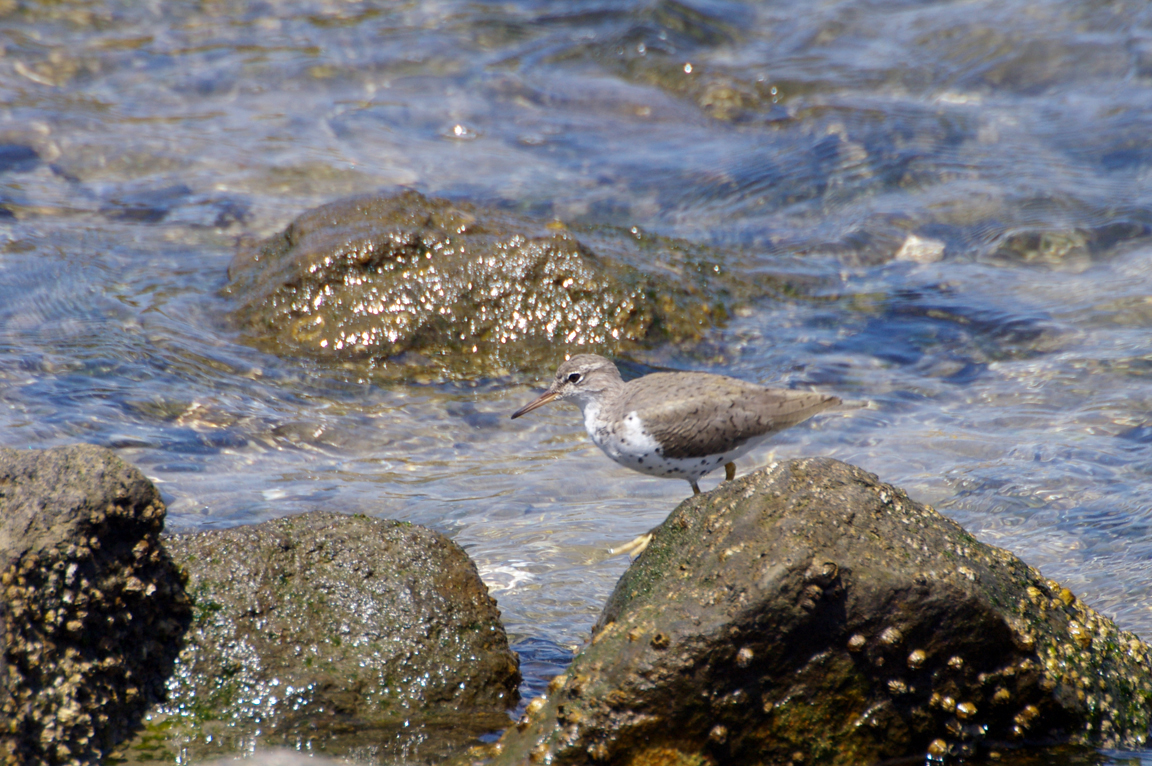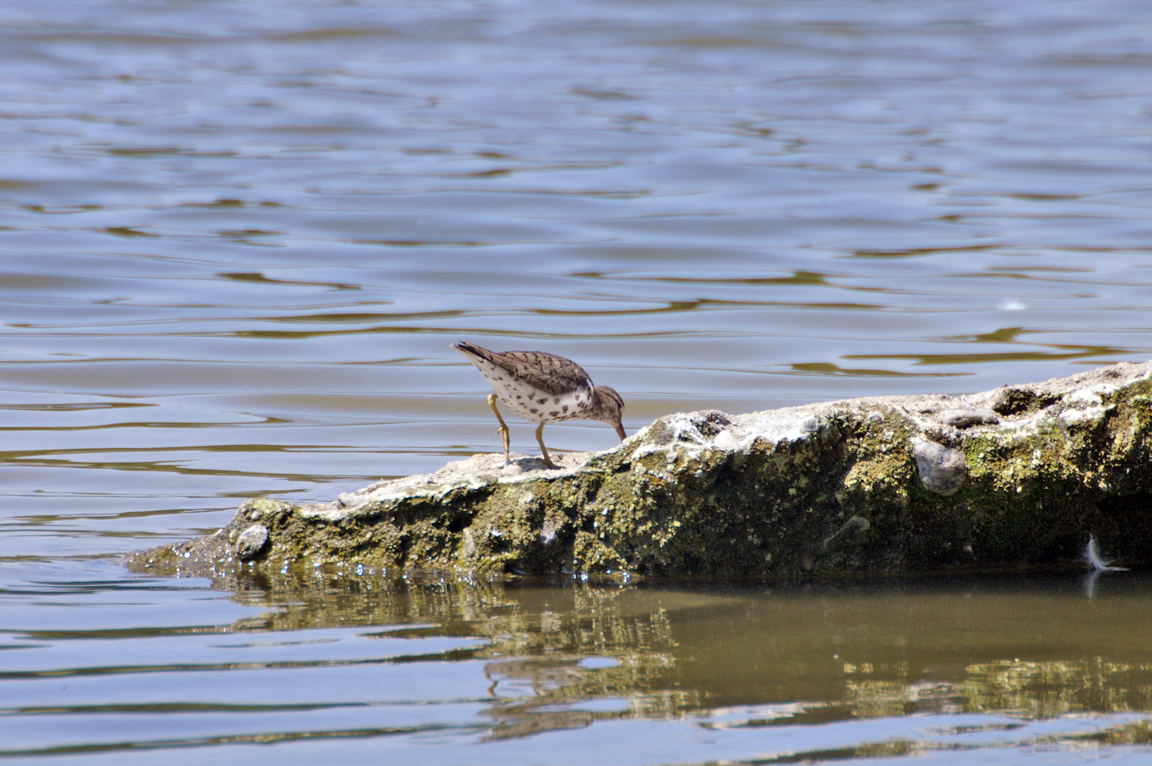|
|
|
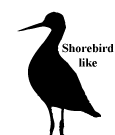 |
Spotted Sandpiper
|
| Actitis macularius | |
The most widespread breeding sandpiper in North America, the Spotted Sandpiper breeds along the edges of nearly any water source throughout the northern half of the continent. It is at home around urban ponds as well as tundra pools.
Interesting Information
-
The female Spotted Sandpiper is the one who establishes and defends the territory. She arrives at the breeding grounds earlier than the male. In other species of migratory birds, where the male establishes the territory, he arrives earlier.
-
The male takes the primary role in parental care, incubating the eggs and taking care of the young. One female may lay eggs for up to four different males at a time.
-
The female may store sperm for up to one month. The eggs she lays for one male may be fathered by a different male in a previous mating.
-
The function of the teetering motion typical of this species has not been determined. Chicks teeter nearly as soon as they hatch from the egg. The teetering gets faster when the bird is nervous, but stops when the bird is alarmed, aggressive, or courting.
Description
Adult Description
-
Size: 18-20 cm (7-8 in)
-
Wingspan: 37-40 cm (15-16 in)
-
Weight: 34-50 g (1.2-1.77 ounces)
-
Medium-sized shorebird.
-
Legs moderately long.
-
Neck moderately long.
-
Bill medium-sized.
-
Back brown.
-
Underparts white with distinct round spots.
-
Constantly bobs its tail and rear end up and down as it walks.
-
Flies with bursts of shallow, fluttering wing beats.
-
White stripe along wings visible in flight.
-
Rump and tail dark.
-
Tail white on outside only.
-
Thin white eyestripe, indistinct white eyering.
Breeding adult (Alternate Plumage
Brown above with indistinct black bars scattered across back. White below with bold black spotting. Legs flesh-colored.
Non breeding adult (Basic Plumage)
Upperparts grayer and without barring. Underparts white, with brown extending down sides of breast. Legs yellowish.
Sex Differences
Sexes alike in plumage, but females are larger and have larger spots that extend farther down the lower belly.
Immature
Juvenile resembles winter adult, but has scalloping of dark edges to back feathers, especially on the wings.
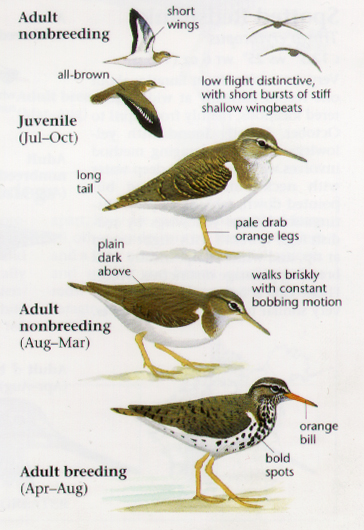
Photo taken from: The Sibley Field Guide by David Allen Sibley
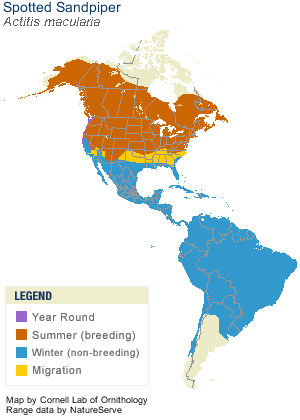
© 2003 Cornell Lab of Ornithology
|
Habitat |
|
|
Behavior |
|
Walks and wades, thrusts head forward and grabs prey. |
|
Food |
|
Aquatic and terrestrial invertebrates. |
Taxonomy
| Kingdom: | Animalia |
| Phylum: | Chordata |
| Subphylum: | Vertebrata |
| Class: | Aves |
| Order: | Charadriiformes |
| Family: | Scolopacidae |
| Genus: | Actitis |
| Species: | Actitis macularius |
| Subspecies: | Actitis macularius hypoleucos |
| Actitis macularius macularius |
Similar Species |
|
|
Bird Sound |
|
Call a high pitched whistled "weet," uttered singly or in pairs. |
|
Eggs look like this |
|
Photo taken from: ARCTOS Collaborative Collection Management Solution |
Videos
Spotted Sandpiper
Up close and personal
